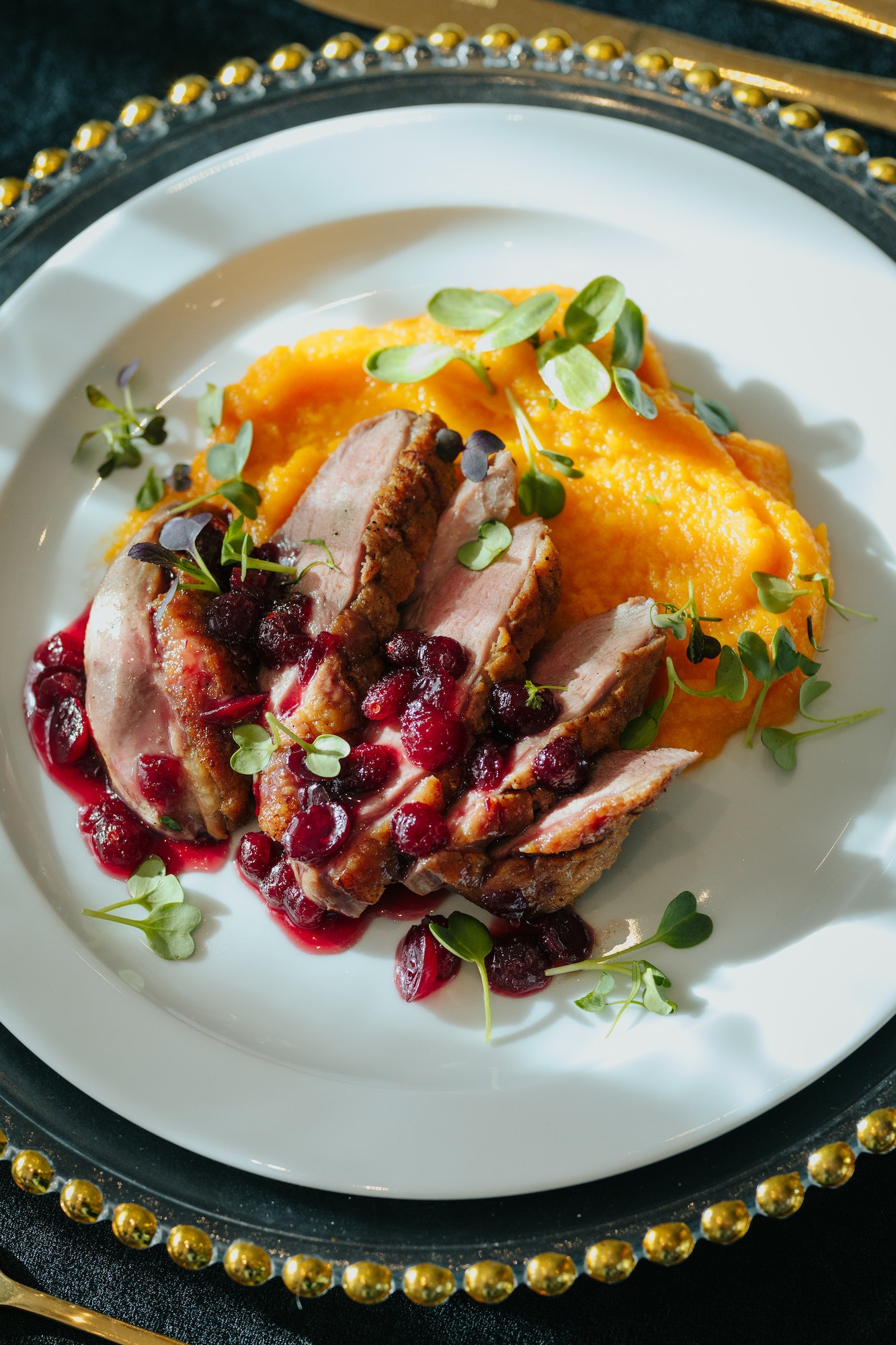Colorful garnishes and sauces are not only essential for adding visual appeal to a dish, but they also contribute to the overall flavor profile of a meal. As any seasoned chef will tell you, the presentation of a dish is just as important as its taste. In fact, studies have shown that the appearance of food can significantly impact our perception of its taste. With that in mind, let’s explore the art of using color contrast and balance to create visually stunning and delicious main courses.
Color Contrast and Balance
When it comes to plating, color contrast and balance play a crucial role in making a dish visually appealing. By incorporating contrasting colors, chefs can create striking presentations that immediately catch the eye and entice the palate. On the other hand, a well-balanced plate ensures that no single element overpowers the others, allowing for a harmonious dining experience.
To achieve color contrast, consider pairing ingredients with complementary colors on the color wheel. For example, red and green ingredients create a vibrant contrast that instantly pops on the plate. Think of a tomato and basil salad drizzled with a bright green pesto sauce – the vivid colors not only excite the eyes but also indicate freshness and bold flavors.
Another way to create color contrast is by using different shades of the same color. A plate featuring various shades of green can be just as visually appealing as one with multiple colors. To achieve this effect, try combining ingredients like avocado, asparagus, and spinach with a vivid green sauce or herb garnish.
On the other hand, balance is achieved when all elements on the plate work together harmoniously. This includes not only balancing flavors but also colors. A well-balanced plate should feature an array of colors that complement each other without overwhelming the eye. Too much of one color can make a dish appear monotonous and unappetizing.
Artful Plating Techniques
Now that we’ve discussed the importance of color contrast and balance, let’s explore some artful plating techniques that incorporate colorful garnishes and sauces.
Sauce Smears
One popular plating technique is the sauce smear. This involves spreading a small amount of sauce across the plate in a sweeping motion, creating an elegant and eye-catching design. A brightly colored sauce, such as a red pepper coulis or vibrant green herb oil, can make a dramatic statement on the plate and provide a burst of flavor to the dish.
Sauce Dots
Another technique is using sauce dots to create visual interest and add pops of color to the plate. To create sauce dots, simply pipe small dots of sauce onto the plate using a squeeze bottle or piping bag. This technique works well with thicker sauces and purees and can be used to create intricate patterns or simple accents on the plate.
Edible Flowers
Edible flowers are a beautiful and delicate way to add color and elegance to a dish. Choose flowers with vibrant colors, such as nasturtiums, pansies, or violas, to create a stunning contrast against the other elements on the plate. Be sure to use only edible flowers and ensure they have been grown without pesticides.
Microgreens and Herbs
Microgreens and herbs not only add fresh flavors to a dish but also provide an opportunity to introduce color and texture. Garnish plates with microgreens like radish, beet, or arugula for a burst of vibrant color, or use fresh herbs like parsley, cilantro, or dill for a more subtle touch.
In conclusion, mastering the art of color contrast, balance, and plating techniques can elevate any main course from ordinary to extraordinary. By incorporating colorful garnishes and sauces into your dishes, you’ll create visually stunning presentations that are sure to impress both the eyes and taste buds of your guests.

